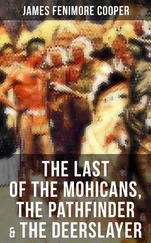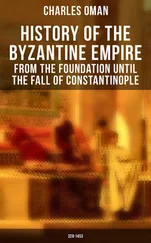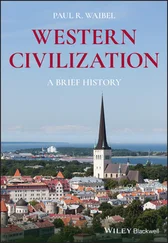Lars Brownworth - Lost to the West - The Forgotten Byzantine Empire That Rescued Western Civilization
Здесь есть возможность читать онлайн «Lars Brownworth - Lost to the West - The Forgotten Byzantine Empire That Rescued Western Civilization» весь текст электронной книги совершенно бесплатно (целиком полную версию без сокращений). В некоторых случаях можно слушать аудио, скачать через торрент в формате fb2 и присутствует краткое содержание. Год выпуска: 2010, ISBN: 2010, Издательство: Random House, Inc., Жанр: Старинная литература, на английском языке. Описание произведения, (предисловие) а так же отзывы посетителей доступны на портале библиотеки ЛибКат.
- Название:Lost to the West: The Forgotten Byzantine Empire That Rescued Western Civilization
- Автор:
- Издательство:Random House, Inc.
- Жанр:
- Год:2010
- ISBN:9780307407962
- Рейтинг книги:3 / 5. Голосов: 1
-
Избранное:Добавить в избранное
- Отзывы:
-
Ваша оценка:
- 60
- 1
- 2
- 3
- 4
- 5
Lost to the West: The Forgotten Byzantine Empire That Rescued Western Civilization: краткое содержание, описание и аннотация
Предлагаем к чтению аннотацию, описание, краткое содержание или предисловие (зависит от того, что написал сам автор книги «Lost to the West: The Forgotten Byzantine Empire That Rescued Western Civilization»). Если вы не нашли необходимую информацию о книге — напишите в комментариях, мы постараемся отыскать её.
Lost to the West: The Forgotten Byzantine Empire That Rescued Western Civilization — читать онлайн бесплатно полную книгу (весь текст) целиком
Ниже представлен текст книги, разбитый по страницам. Система сохранения места последней прочитанной страницы, позволяет с удобством читать онлайн бесплатно книгу «Lost to the West: The Forgotten Byzantine Empire That Rescued Western Civilization», без необходимости каждый раз заново искать на чём Вы остановились. Поставьте закладку, и сможете в любой момент перейти на страницу, на которой закончили чтение.
Интервал:
Закладка:
*It’s also, interestingly enough, the basis of the law practiced in the state of Louisiana. *It was called the Everlasting Peace because, unlike most treaties with Persia, it was open-ended and didn’t provide a time limit when hostilities could resume. Unfortunately, “eternity” turned out to be only eight years. *Theodora, or perhaps Procopius (the historian writing it down), is misquoting here a famous maxim once given to the tyrant of Syracuse, Dionysius the Elder: “Tyranny makes the best shroud.” Considering how it turned out, though, most citizens of Constantinople would probably consider the distinction unnecessary. Procopius, History of the Wars: The Persian War Books I & II (New York: Cosimo, 2007).†Eunuchs had a valued place in Byzantine society. Their condition disbarred them from the throne, and they could therefore be uniquely trusted for high office. In a world of constantly shifting alliances and unceasing intrigue, eunuchs were loyal, distinguished, and wielded a considerable amount of power. Although the practice was officially frowned upon, fathers would often castrate younger sons to ensure them a lucrative career in the civil service.
9

O F B UILDINGS AND G ENERALS
It was hardly an auspicious start to what would become the Byzantine golden age. For three days, smoke hung thickly over the devastated capital, and small fires flickered in the streets. The rioters had left a trail of destruction, reducing the main gate of the imperial palace, the Senate house, the public baths, and numerous houses and palaces to ashes in their wake. The center of the city seemed to be a blackened shell, and the flames had even claimed the city’s cathedral of the Hagia Sophia and the neighboring Hagia Irene as well. Constantinople looked as if it had been looted by some ravaging barbarian horde, and the fact that its own citizens had inflicted such a wound hovered like a black cloud over the streets. Surveying the damage from the windows of his palace, Justinian nevertheless saw not a disaster, but a perfect opportunity. The destruction had cleared away the detritus of the past, making way for an ambitious new building program, which would transform the city—and the empire as well—into the glittering center of civilization.
Never before had the citizens of the Roman Empire seen such construction, at such a pace. The dusty city of the emperor’s birth, Tauresium, was refurbished and renamed Justiniana Prime; hospitals and baths sprang up, and fortifications were strengthened. Bridges spanning mighty rivers were constructed, and inns were spaced along the major highways for the imperial post to change horses. The most impressive work, however, was saved for Constantinople. A sumptuous new Senate house, colonnaded with creamy white marble pillars and topped with fine carvings, rose near the city’s central square to replace the burned one. Three statues of barbarian kings were set up, all bowing before a large column surmounted with an equine statue of Justinian in full military dress. *To the west of his column, the emperor built a massive subterranean cistern to feed the city’s numerous fountains and baths and to provide fresh water for all of its inhabitants. Constantinople gleamed with new construction, but, for the emperor, this was merely the prologue. He now turned to the project which would surpass them all.
The Hagia Sophia was undoubtedly the most important structure that had been destroyed in the riots. Originally built by Constantius II to house the mystery of the Holy Communion, it had been demolished by rioters more than a century before when the great golden-tongued reformer Saint John Chrysostom had been exiled to Georgia. The emperor Theodosius II had rebuilt it eleven years later along the same rather uninspired lines, and most in the city assumed that the familiar outline would soon greet them once again. Justinian, however, had no intention of following the tired plans of an earlier age. This was a chance to remake the cathedral on a whole new scale, something worthy of his vision for the empire. It was to be nothing short of a revolution, equal parts art and architecture, the enduring grandeur of the emperor himself frozen in marble and brick.
Little more than a month after the Nika riots, construction began on the mighty showpiece of his reign. Choosing two architects who had more vision than practical experience, Justinian told them to create a building unlike anything else in the world. Sheer scale wasn’t enough—the empire was full of grand monuments and immense sculpture. This had to be something different, something fitting for the new golden age that was dawning. Expense, he informed them, wasn’t an issue, but speed was. He was already in his fifties, and he didn’t intend to have some successor apply the final coat of paint and claim it as his own.
The two architects didn’t disappoint. Rejecting the classical basilica form that had been used for three hundred years, they came up with a bold and innovative plan. *Building the largest unsupported dome in the world, they put it on a square floor plan and distributed its weight over a cascading series of half-domes and cupolas. The riches of the empire were poured into its construction. Each day, gold arrived from Egypt, porphyry from Ephesus, powdered white marble from Greece, and precious stones from Syria and North Africa. Even the old capital provided a quarry for the new, as columns that had once stood in the Temple of the Sun in Rome were carted off to adorn the rising church.
The building seemed to grow at a breathtaking rate. The architects split their crew of ten thousand men into two parts, placing one group at the south end and the other at the north end. Spurred on by the presence of the emperor—who daily visited the site—the two teams raced against each other, speeding up the building to a frenetic pace. In the end, it took only five years, ten months, and four days from the laying of the first stone to the completion of the building—a remarkable achievement in any age, much less one without modern machines.†
Stepping through the great doors reserved for the emperor and patriarch into the vast interior of the Hagia Sophia for the first time, Justinian was overwhelmed, struck by a vision of heaven made real in every graceful curve and sweeping arch.‡ The cavernous interior dome, 107 feet high and spanning nearly four acres, was decorated with simple crosses and completely covered in gold, seemingly floating above the ground as if “suspended from heaven itself on a golden chain.” Candles and lamps were hung from the upper galleries, outlining the interior in an unforgettable glow and casting soft light over the glittering mosaics. From the floor rose multicolored columns topped with intricate scrollwork and deeply carved with the complex monograms of Justinian and Theodora. At the front of the church, a massive fifty-foot iconostasis was hung with great silver disks engraved with images of Mary, Jesus, and the saints. Beyond lay the high altar, sheltering an unrivaled collection of relics, from the hammer and nails of the Passion to the swaddling clothes of Christ. Even the wood surmounting the great imperial door was unlike any in the world, composed as it was from an ancient fragment of Noah’s Ark. Marveling at the stunning panorama, Justinian stood silently, drinking it in. After a long moment, those closest heard him whisper, “Solomon, I have surpassed you.”
The emperor wasn’t in the habit of making idle boasts, nor had he forgotten his great dream of redressing the embarrassing situation of a Roman Empire that didn’t include Rome. The aftermath of the Nika revolt had given him a measure of domestic peace, and he could now concentrate on his plan to reconquer the lost lands. Predictably, there were plenty of people telling him that it couldn’t be done. Chief among them was John the Cappadocian, who, like any treasurer worth his salt, was looking at it from a financial standpoint and didn’t think it made economic sense. He remembered all too clearly the disaster of Basiliscus’s African invasion, which had crippled the imperial economy for nearly sixty years. Pleading with Justinian not to risk the empire’s resources on an unnecessary campaign, he succeeded in getting the emperor to drastically reduce the size of the force to be sent with Belisarius. On the one hand, this ensured that the empire could survive the expedition’s failure; but on the other, its small size seemed to invite the very failure it was trying to avoid. It hardly mattered to Justinian, however; he had an unwavering faith in the abilities of his general.
Читать дальшеИнтервал:
Закладка:
Похожие книги на «Lost to the West: The Forgotten Byzantine Empire That Rescued Western Civilization»
Представляем Вашему вниманию похожие книги на «Lost to the West: The Forgotten Byzantine Empire That Rescued Western Civilization» списком для выбора. Мы отобрали схожую по названию и смыслу литературу в надежде предоставить читателям больше вариантов отыскать новые, интересные, ещё непрочитанные произведения.
Обсуждение, отзывы о книге «Lost to the West: The Forgotten Byzantine Empire That Rescued Western Civilization» и просто собственные мнения читателей. Оставьте ваши комментарии, напишите, что Вы думаете о произведении, его смысле или главных героях. Укажите что конкретно понравилось, а что нет, и почему Вы так считаете.












